The Drum Majors of Chess: Part One
Chess enthusiasts and supporters,
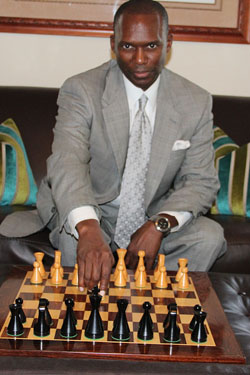
As part of Black History Month tribute in 2015, The Chess Drum will provide an overview of Black trailblazers in the history of chess. In this three-part series, we will look at the pioneers of the 19th century, the 20th-century surge in masters, and finally the young upstarts in the new age of chess. Prior to the inception of this website, not much had been written on these topics apart from a few isolated efforts. One of the seminal pieces written was by Gregory Kearse titled, “A Brief History of Black Chess Masters in America“. However, this series will not be limited to the U.S. but will have a Pan-African orientation. In this series, we will examine some key moments in the popularization of chess in the worldwide Black community.
Enjoy!
Dr. Daaim Shabazz, The Chess Drum
The Drum Majors of Chess: Pioneers of 19th Century
Chess has a storied history and there has been much said about its evolution from chaturanga to shatranj to the current form we play today. Despite its renaissance in the romantic period of Europe, there has also been a chess history that has yet to be told. Thousands of stories have given chess its rich history and intrigue that many leisure activities cannot boast of.

For the past 14 years, The Chess Drum has uncovered some of this history in an attempt to unfurl an ignored segment in the game. Players of African descent have certainly been obscured in terms of their contributions and steady presence in chess over the years. In the inception of The Chess Drum, there was a page called “Drum Majors of Chess” dedicated to those Black players who have reached master-level chess. It was the question “Where are the Black Masters?” that started me on this journey now called “The Chess Drum”. It is a discovery that introduces many and confirms for others, the diversity of chess.
There are many who cannot see the importance of this and some have even called such initiatives “racist”. However, most will understand that if chess is to gain any traction in the larger community, it has to be seen as an activity embraced by a variety of people and not simply an elite class.
A “drum major” is one who leads a band troupe, but in this regard it is bestowed by The Chess Drum as a title of leading Black chess players as an example of chess excellence. The play is on the affiliation to the website as much as it is in the core definition of the word. These are the men who have set the tone for the Black community in chess.
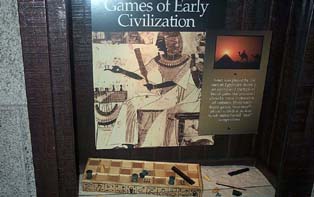
African civilizations had their own forms of chess. This exhibit was featured at the U.S. Chess Hall of Fame (at that time in Miami, Florida) on the ancient Egyptian game of Senet. I also saw a Senet board in the Museum of Ancient Egyptian Antiquities in Cairo, Egypt. Copyright © 2001, Daaim Shabazz.
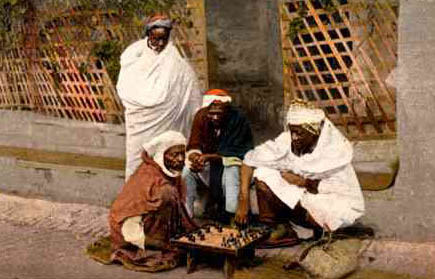
This photo was from an 19th century postcard with a French caption reading ‘Algers–Negres jouant aux échecs’ meaning “Algiers–Moors playing Chess.”
Looking at the history of Black chess, there is a lot of information that has not been discovered, but we do know that there have been a lot of trailblazers. The voyage of chess across the Sahara into Morocco has not been fully documented, but perhaps the first people of African descent known to have adopted chess as an integral part of its culture were the Moors.

Pieces of “SHATRANJ“
Many accounts will find that “chaturanga” traveled from the Indian subcontinent up through Persia, then across the Saharan by means of trade caravans and had been renamed the Persian moniker of “shatranj”. Casual tournaments were common amongst the Moors as well as an activity for erudite players engaging in blindfold competitions. The Moors’ role in chess has been recounted and was one of the most pivotal moments for chess.
When shatranj entered the Iberian peninsula with the arrival of the Moors, the game would undergo yet another change nearly 800 years later. It would be this game that would again move around the world with the emergence of Spain and its navigational superiority. While slavery was a prominent aspect of this 400-year period that followed, the sons of slaves did not have many opportunities to engage in such revelry or gaming. However, those mulatto slaves and those born free had more access to “cultural niceties”. One of those men was James McCune Smith.
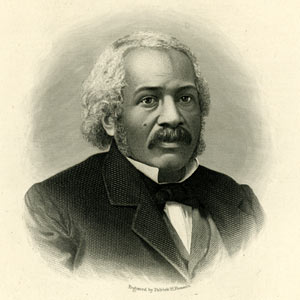
“And as we gazed at Morphy, with his fine, open countenance, brunette hue, marvelous delicacy of fibre, bright, clear eyes, and elongated submaxillary bone, a keen suspicion entered our ethnological department that we were not the only Carthaginian in the room. It might only be one drop, perhaps two, God only knows how they got there but surely, beside the Tria mulattin who at present writes, there was also a Hekata-mulattin in that room!”
In America, the abolishment of slavery brought a few Black men into this pastime which was rare. However, erudition was not lost on Blacks seeking to advance their socioeconomic lot. One such man attended medical school in Scotland, enjoyed chess and was an erudite scholar. James McCune Smith was born of a freed slave in New York City and with elegant prose, wrote of being an abolitionist contemporary to Frederick Douglas. He also cited seeing Paul Morphy compete and referred to him as a “hekata-mulattin” or mulatto. (essay) Smith died only a few weeks before the Emancipation Proclamation was signed and ratified, but later would come a brilliant problemist known as Theophilus Thompson.
.jpg)
Theophilus Thompson’s book, “Chess Problems” published in 1873.
Having learned chess in 1872, Thompson was a serious student of the game and penned a historic problem book aptly titled, “Problems: Either to Play and Mate.” The chess career of Thompson ended when he disappeared from the scene, but census records state that a “Theophilus Thompson” settled in Anne Arundel, Maryland with his family, became an oysterman and lived into his 80s or 90s. Perhaps he was satisfied with his magnanimous contribution and decided to focus on more serious matters.
(Note: This was a mischaracterization. There were two different Theophilus Thompson, but the chess-playing individual died of tuberculosis at age 25. See “The Mystery of Theophilus Thompson Solved!!“)
Of course, chess was considered a luxury that only the well-heeled intelligentsia of society could enjoy. Hence, chess (rightly or wrongly) is associated with people of high intellectual pedigree. In those days, Blacks had limited access to those social circles. There were other Black players during the late 19th- and early 20th-century. However, news traveled slowly and it is doubtful (yet possible) that these men could have known each other. This can only be surmised by such comments of William Griffin.
“I play chess because of the pure intellectual discipline and high aesthetic pleasure which the game affords. I do not know a great many of my race who are devotees of the Royal Game.”
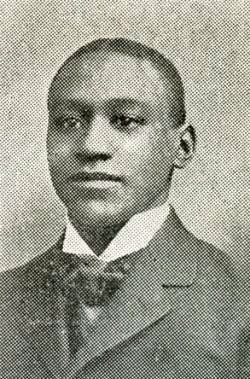
William Griffin on page 101 of The Rice Gambit by H. Keidanz (New York, 1905).
The American Chess Bulletin ran a brief biography on Griffin in February 1905. According to this source, Griffin was born in the backwoods of Missouri and moved with his family to Kansas City, Missouri at the age of 13. He completed public school there and attended Kansas State University where he studied to be a teacher. He was largely self-taught in chess and owned a handsome collection of 25 books which he cherished and possessed with pride.
It was rare to find a Black man of his pedigree in those days, but there were such men attending Ivy League schools such as Cornell and Harvard University in the early 1900s. Perhaps the records of other Black players remain buried in the archives of these ivory towers. Griffin was on record for making it to the semi-final round in the Rice Gambit tournament and collected a bronze medal for his showing. He also won a prize of $15.00 which was a decent sum in those days. It was also stated that Griffin had a penchant for playing blindfold games.
So it is these Black men who once trod these lands that serve as the original Drum Majors… leading the way and setting an example not so much for chess, but for being men of conviction, discipline and erudition. Perhaps there are many other stories yet uncovered, but the above accounts provide an understanding that chess was something enjoyed by a variety of people. These Black men were certainly considered privileged in those days, but it would be a few decades before the complexion of chess would be changed forever.
For those of us in the Black community who have decided to make chess part of our lives, we honor those who came before us by making our own contributions. For some of us, the task may be to write so that generations to come will know. For others, it may be one or more of these: play, coach, organize, direct or parent (a player). All of these are ways in which we can help bring honor to chess and in the following two segments, we will see what such efforts have produced.
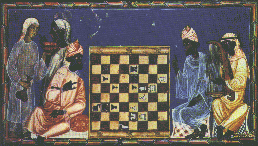
Moors playing chess from chess book of Alfonso X the Wise, Castile (1283 AD).
# # #
The Drum Majors of Chess: Part One
(Pioneers of 19th Century)
The Drum Majors of Chess: Part Two
(The Rise of the Black Chess Master)
The Drum Majors of Chess: Part Three
(The Future: 100 Black GMs by 2100)

Queen Nefertari of Egypt playing Senet.
Very interesting edited works of James McCune Smith on a variety of topics including his essay on chess. The link below does not contain the entire collection so pages are intentionally missing.
https://books.google.com/books?id=zQUqIOmsdLkC&pg=PA289&lpg=PA289&dq=william+mccune+smith+chess&source=bl&ots=1hb3TzdW99&sig=g3zCJzPGFsUU6sDWkO9Af0Vnjvo&hl=en&sa=X&ei=l4LZVI_OBYSqggTy44HIAw&ved=0CC4Q6AEwAg#v=onepage&q=william%20mccune%20smith%20chess&f=false
Great piece on black’s in chess history. I enjoyed it very much. Can’t wait for part 2 and 3.
Magnificent stuff Daaim. Keep them coming!